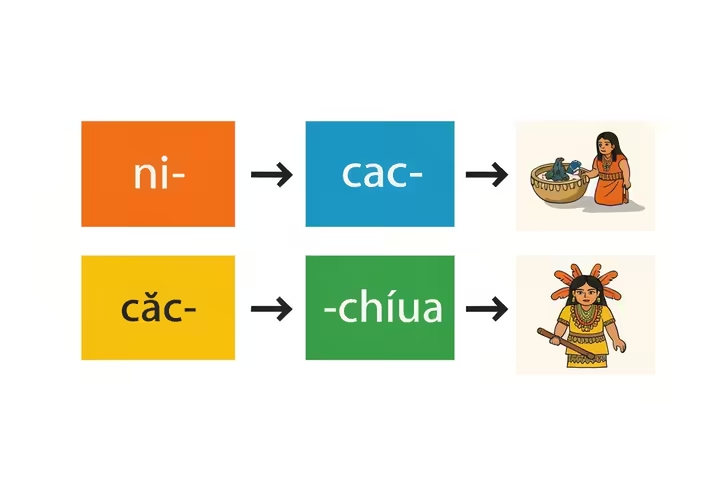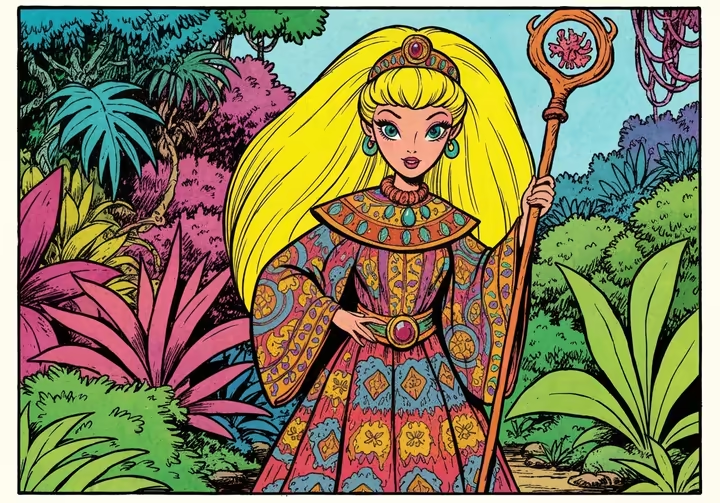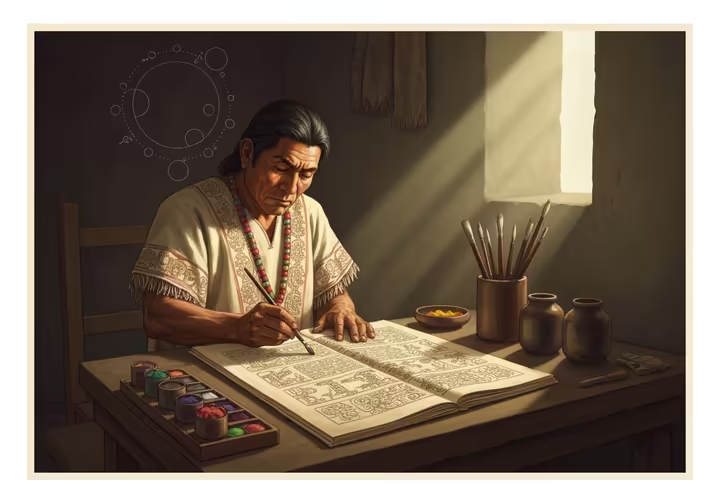Aztec Language
The Aztecs spoke a language called Nahuatl. It was a huge part of their world... and it's not dead. Let's look at how it works, how they wrote it, and why you've probably spoken some of it without even knowing. To see how language fit into their larger system of messengers, symbols, and speech, check out How the Aztecs Communicated.
probably spoken some of it without even knowing.What is the Aztec Language?

The Aztec language is called Nahuatl (pronounced 'ná-watl'). Its name might mean 'clear speech' or 'command.' For centuries, it was the main language across Mesoamerica, used for everything from trade to ruling an empire.
Nahuatl is part of the huge Uto-Aztecan language family, which has over thirty languages stretching from the Western U.S. into Central America. Most experts think the first Nahua people came from the Southwestern U.S. or Northwestern Mexico. Around the 5th century, they started moving south, taking their language with them.
These groups built big civilizations, like the Toltecs and later the Mexica (the people we call Aztecs). The Mexica founded their capital, Tenochtitlan, on an island in Lake Texcoco in 1325.
Language of an Empire
As the Aztec Empire grew, the Nahuatl spoken in the capital, Tenochtitlan, became the most important version. We call it Classical Nahuatl. It was the official language for government, art, and diplomacy across the region.
When the Aztecs conquered a new place, their language came with them. Local rulers had to learn it, and speaking it was a sign of being high-class. The nobles (the pīpiltin ) and priests used a formal version, while common folk (the mācēhualtin ) spoke a more casual Nahuatl.
Not Just One Nahuatl
Nahuatl isn't just one language, it's a whole family. Dozens of versions were spoken back then, and many still are today. The Mexican government now recognizes thirty different varieties, and some are so different their speakers can't understand each other.
And don't let the name "Classical Nahuatl" fool you, it wasn't the 'purest' version. The big city of Tenochtitlan was a melting pot of different dialects. Funny enough, some modern Nahuatl dialects spoken in the countryside are actually older than the 'classical' version we read about.
The Nuts and Bolts of Nahuatl
Language Sounds
Nahuatl sounds different from English or Spanish. It has four basic vowels (a, e, i, o) that can be short or long, which changes a word's meaning. The consonant x is pronounced like 'sh' (as in 'shoe'), and tz sounds like the 'ts' in 'cats'.
But the most famous sound is the tl . It's not a 't' and an 'l' sound, but one single consonant. To make it, get your tongue ready to say 't', but let the air flow out the sides of your mouth... kind of like the 'll' sound in Welsh.
LEGO Words
Nahuatl grammar is like building with LEGOs. You stick small word parts (like prefixes and suffixes) together to make one giant word that can mean a whole sentence. This makes it super easy to invent new words for new ideas.

For example, you can stick a noun right into a verb. To say "I make shoes," you'd combine the prefix ni- ('I'), the noun root cac- ('shoes'), and the verb chīhua ('to make') into one word: nicacchīhua .
This way of building words shaped how they saw the world. Instead of seeing separate things ('I,' 'make,' 'shoes'), the language squished the person, the action, and the object into one single event. It was all about how things connected, not what they were by themselves.
Aztec Writing System

The Aztecs had a cool, visual way of writing that used images and symbols, but it wasn't an alphabet. It was a mix of pictures for whole words and pictures for sounds (syllables). They used it to write down history, keep track of taxes, and name places. To see how these symbols actually worked, check out Aztec Hieroglyphics.
The simplest symbols were pictograms, which were just drawings of things. For example, a drawing of a hill stood for the Nahuatl word for hill, tepetl .
They also had ideograms, symbols for ideas you can't really draw. A trail of footprints meant a journey. A little scroll coming from someone's mouth meant they were talking or singing, and a shield with a club meant war.
The Rebus Puzzle
But they had a clever trick, the rebus principle. This means using a picture for its sound, not its meaning, to spell out another word. Think of drawing an eye and a can to mean 'I can.' This was super important for writing down names.
Take the name for their capital, Tenochtitlan. The writers (called tlahcuilohqueh ) would combine a picture of a stone ( tetl ) with a prickly pear cactus ( nōchtli ). The sounds 'te' and 'noch' spell out 'Tenoch,' the city's founder. The whole picture means 'By the Rock Cactus.'
This writing system was also an art form. The tlahcuilohqueh were both scribes and painters. Color was packed with symbolic meaning. The Spanish conquest stopped this writing system from developing more, but the books that survived show a smart and beautiful way of recording the world.
Language in Action
Scribes and their Books
The writing experts were the tlahcuilohqueh (singular: tlahcuiloh ), the honored scribe-painters. These scribes were smart folks, usually from the noble class. They trained in special schools called the calmecac , where they learned painting, history, and how to read sacred texts.

Their job was to create the painted books, or codices, called amoxtli in Nahuatl. These weren't like our books. They were long strips of bark paper or deerskin, folded like an accordion. In them, the scribes recorded family histories, tax lists, calendars, and prophecies.
A codex was less like a book and more like a script. A priest or historian would look at the glyphs, and the images would prompt them to recite the full, memorized story. The painted page and the spoken word worked together.
Speeches and Poetry
Speaking well was a big deal, especially for nobles. A major type of speech was the huehuetlahtolli , or 'the words of the elders.'
These were formal speeches, full of metaphors, passed down through generations. They held the moral and social teachings of the culture. People gave these speeches at big events like weddings or before going to war.
But the best stuff was their poetry, called in xochitl in cuicatl , or 'the flower and the song.' This poetry was how they explored the big questions about life. The 'flower' ( xochitl ) was life's fragile beauty, and the 'song' ( cuicatl ) was the only way to find real truth. To them, poetry was 'the only truth on earth.'
Aztec Words You Use
When the Spanish arrived in the 1500s, they found lots of new plants and animals. They didn't have words for them, so they just borrowed the Nahuatl ones. Through Spanish, many of these words made their way into English.

You've definitely used some of them. The Aztec elite drank a bitter drink called xocolātl (from xococ , 'bitter,' and ātl , 'water'). This became our chocolate .
The tomatl became our tomato . The rich green fruit they called āhuacatl (which also meant 'testicle') became our avocado . The spicy chīlli pepper and the clever coyōtl (coyote) also kept their Nahuatl-based names.
But it wasn't a fair trade. Nahuatl was forced to borrow tons of Spanish words for things like horses ( cahuayoh , from caballo ) and the colonial government. So, Nahuatl gave the world words for nature, but got back words for colonial power.
Can You Google Translate Aztec?
Nope. An 'Aztec language translator' is pure fantasy. For one thing, the glyphs were more like cue cards for stories that were spoken out loud, and we've lost most of those stories. Plus, the meaning of a glyph could change based on its color, size, and where it was on the page.
And since 'Nahuatl' is a whole family of languages, a translator for one version would be useless for another.
How We Can Read Nahuatl
The Friars' Project
We can read Nahuatl today because of a weird twist of history. Spanish missionaries, mostly Franciscans, had to learn the language to convert people to Christianity. They came up with a way to write Nahuatl using the Latin alphabet and taught it to the sons of Aztec nobles.

The biggest project was led by a friar named Bernardino de Sahagún. He and a team of Nahua scholars created the Florentine Codex, a huge encyclopedia of Aztec life. Sahagún asked questions, and his team wrote down everything they knew in Nahuatl, using the new alphabet.
The Florentine Codex is an amazing record of a lost world. Ironically, the project that was supposed to help erase a culture ended up creating the best record of it.
Taking Back the Alphabet
The Nahua nobles didn't just learn the alphabet, they made it their own. They started writing all sorts of documents without any missionary oversight.
For centuries, Nahua communities wrote wills, land records, and town council notes in their own language. They turned a tool of the colonizers into a tool for their own survival. They used it to defend their rights and preserve their history.
Is the Aztec Language Dead?
One of the biggest myths is that the Aztec language died with the empire, that's completely wrong. Nahuatl is a living language spoken by about 1.5 to 1.7 million people. It's Mexico's most common indigenous language.
You'll find speakers mostly in central Mexico, in states like Puebla and Veracruz, but also in cities across the U.S. like Los Angeles. For these communities, Nahuatl is a key part of their identity and daily life.

But the language is in trouble. For centuries, speakers have been pushed to switch to Spanish because of discrimination. In the past, government schools even tried to stamp out native languages. Even today, speakers can be made fun of, so many use their language only at home.
Reclaiming the Language
Despite the problems, there's a big movement to bring Nahuatl back. In 2003, Mexico passed a law recognizing its 68 native languages, including Nahuatl, as 'national languages' with the same status as Spanish. Now, some schools in Mexico City even offer Nahuatl classes.
The revival is also happening from the ground up. Young people are using TikTok to teach Nahuatl. Musicians are writing new songs in the language, and poets are carrying on the 'flower and song' tradition.
These efforts are all about indigenous people taking back control of their own language and stories. It's a clear message, the voice of the Mexica people has survived for centuries, and it isn't going anywhere.